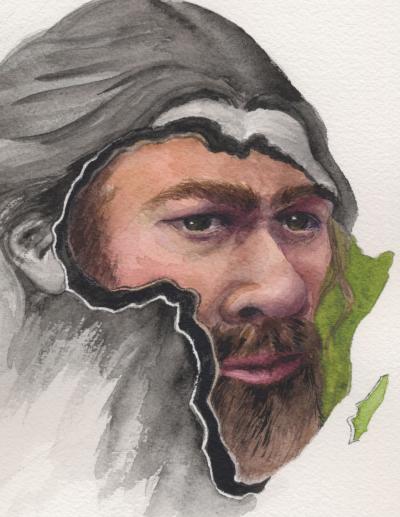Researchers arrived at these findings by developing a new statistical method, called IBDmix, to identify Neanderthal sequences in the genomes of modern humans. The results also suggest that African genomes contain Neanderthal sequences in part due to back-migration of ancestors of present-day Europeans.
Past studies have suggested that East Asians have approximately 20% more Neanderthal ancestry compared to Europeans. But the new findings suggest that these estimates may have been biased due to methodological limitations. Previously developed approaches, such as S*, use a modern reference panel--usually an African population assumed to lack Neanderthal ancestry. But if the reference panel unexpectedly contains Neanderthal sequences, then the method will underestimate Neanderthal ancestry in modern humans.

Credit: Matilda Luk, Princeton University Office of Communications
To address this problem, IBDmix was created as a new category of methods for detecting archaic ancestry. Instead of using a modern reference panel, the approach calculates the probability that an individual's genotype is shared identical by descent (IBD) with an archaic reference genome. Compared with S*, IBDmix is a less biased approach because it has higher statistical power for detecting shared archaic sequences and yields fewer false positives.
The researchers applied IBDmix to 2,504 modern individuals from the 1000 Genomes Project, which represents geographically diverse populations, and used the Altai Neanderthal reference to identify Neanderthal sequence in these individuals. They robustly identified regions of Neanderthal ancestry in Africans for the first time, identifying on average 17 megabases (Mb) of Neanderthal sequence per individual in the African samples analyzed (which corresponds to approximately 0.3% of the genome), compared with less than one megabase reported in previous studies. More than 94% of the Neanderthal sequence identified in African samples was shared with non-Africans.
The researchers also observed levels of Neanderthal ancestry in Europeans (51 Mb/individual), East Asians (55 Mb/individual), and South Asians (55 Mb/individual) that were surprisingly similar to each other. Strikingly, East Asians had only 8% more Neanderthal ancestry compared to Europeans, in contrast to previous reports of 20%. "This suggests that most of the Neanderthal ancestry that individuals have today can be traced back to a common hybridization event involving the population ancestral to all non-Africans, occurring shortly after the Out-of-Africa dispersal," Akey says.
To explore potential explanations for the unexpectedly high Neanderthal ancestry in Africans, the researchers then compared the actual data to simulated genotype data derived from different demographic models. This analysis took into account various sequence characteristics, such as the length of the shared archaic segments, the frequency of these segments in Africans, and the amount of sequence shared exclusively between African and non-African populations.
They found that Africans exclusively share 7.2% of Neanderthal sequence with Europeans, compared with only 2% with East Asians. Simulations showed that low levels of back-migration persisting over the past 20,000 years can replicate features of the data and could therefore be a possible explanation for the observed levels of ancestry among different modern populations. The results suggest that previously developed methods using an African reference population are biased toward underestimating Neanderthal ancestry to a greater extent in Europeans compared to East Asians.
But gene flow went in both directions. The data also suggest that there was a dispersal of modern humans out of Africa approximately 200,000 years ago, and this group hybridized with Neanderthals, introducing modern human DNA into the genomes of Neanderthals. According to the authors, both out-of-Africa and into-Africa dispersals must be accounted for when interpreting global patterns of genomic variation.
Using IBDmix, the researchers also identified 51 high-frequency Neanderthal haplotypes--sets of DNA variations that tend to be inherited together--in modern humans, including several that were undetected with previously developed methods. For the first time, they detected high-frequency Neanderthal haplotypes in Africans, and regions containing these haplotypes are enriched for genes involved in immune function and ultraviolet-radiation sensitivity. These haplotypes may reflect instances of beneficial Neanderthal sequences being rapidly driven to high frequency in modern humans through a process known as adaptive introgression.
The authors note several limitations of their approach. Because IBDmix requires an archaic reference genome, it is not suitable for discovering sequences shared between modern humans and unknown or unsequenced hominin lineages. In addition, the approach requires sequenced genomes from at least ten individuals for robust inferences.





Comments